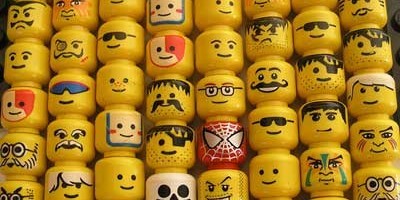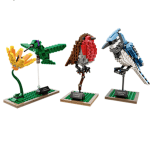How the Crowd Saved LEGO

LEGO soon discovered that their incredible fan base not only contributes to their brand reputation, but could also be used in a very different way: Through crowdsourcing LEGO gets new product ideas directly from children’s (and adult’s) rooms, where millions of existing models are reassembled into new individual LEGO models every day.
 Did you also have these toys of your childhood that you still remember today because you spent such a lot of time playing with them? For me as well as for millions of other kids LEGO’s little colored plastic bricks have been this kind of toy, and since their introduction in 1947 more than three generations have been building cities, cars, and fantasy worlds with these world famous LEGO bricks. The business model of the family-owned Danish LEGO Group has been the same for many years: after a product has been developed by LEGO’s internal design department, the set of bricks will be produced and sold with instructions how to build the respective model. But the real fun starts in children’s rooms, when the bricks of different models are reassembled to new individual LEGO models. Today the modular LEGO system has grown to an impressive variety of different parts (colored bricks, figures, and many other small pieces) that can be assembled to produce models of all kinds.
Did you also have these toys of your childhood that you still remember today because you spent such a lot of time playing with them? For me as well as for millions of other kids LEGO’s little colored plastic bricks have been this kind of toy, and since their introduction in 1947 more than three generations have been building cities, cars, and fantasy worlds with these world famous LEGO bricks. The business model of the family-owned Danish LEGO Group has been the same for many years: after a product has been developed by LEGO’s internal design department, the set of bricks will be produced and sold with instructions how to build the respective model. But the real fun starts in children’s rooms, when the bricks of different models are reassembled to new individual LEGO models. Today the modular LEGO system has grown to an impressive variety of different parts (colored bricks, figures, and many other small pieces) that can be assembled to produce models of all kinds.
However, the LEGO Group faced serious problems during the early 2000’s. The internal designers created more and more complex products, requiring many new components. The supply chain costs exploded, but sales dropped 30% in 2003 and another 10% in 2004. Within seven years the number of different components increased from 7,000 to 12,400. Not only had LEGO overdiversified its product line, but also created imaginative and very complex products that didn’t appeal to their (still very large) fan base. Clearly a change was needed.
LEGO soon discovered that their incredible fan base not only contributes to their brand reputation, but could also be used in a very different way: Crowdsourcing. Children as well as adults never just build the predefined LEGO model once. They usually play around and often they create new stunning models with existing bricks and other Lego parts (for example have a look at this car factory). This excitement about the endless opportunities to assemble existing parts builds the foundation for a large community of lead users. However, until a few years ago, this community has been dispersed and has never been explicitly addressed by LEGO before.
With the introduction of LEGO Ideas this changed. They created a new platform to create new models, share ideas, and even bring their own models  to the market with a very simple business model. Every registered user can create and publish a product design. Other
to the market with a very simple business model. Every registered user can create and publish a product design. Other 
members of the community are then able to discuss the models, ask questions, and – the most important aspect – vote for it. As soon as a submission gets 10,000 votes, the product will be presented to official reviewers who will then identify the potential for the mass market (and legal issues). Unlike other crowdsourcing platforms such as Topcoder, there is no competition: Reviewers decide about the approval independently and if the product is approved, it moves into production and will be sold through the official LEGO distribution channels (for example this WALL-E model on the left or the birds on the right). Creators are incentivized not only by the reputation of having their own official LEGO product in store, but also receive a 1% royalty on the net revenue. To keep the user community engaged on the platform, LEGO Ideas tries to create as much transparency of the review and voting process as possible. Furthermore, they provide detailed feedback for rejected models and regularly publish news about the status quo and development process of crowdsourced products on a separate blog.
With this new crowdsourcing model LEGO creates great customer value. They inevitably get many more ideas than from their internal design teams (which are still necessary for the review, though). Until today, over 13,000 projects have been submitted to the LEGO Ideas platform (discover them here). Furthermore, as a side-effect the online voting process provides LEGO’s managers with a clear picture of the fan’s desires and almost automatically creates a “pre-launch campaign”. Although there is a 1% royalty cost, the quality and number of ideas help LEGO to capture a large portion of this value. To focus on their core ability to build exciting models out of simple components, just in the last few years LEGO went from 12,000 different pieces to 6,800 again. This move back to the roots also reduced the product development period from 2-3 years to ca. 12 months. I think there is further potential to grow their crowdsourcing business. Currently product reviews of all 10,000+ voted models only happen approximately twice a year. I think by speeding up this process LEGO could further grow the community of active creators on the platform.
The new “back to the roots” strategy combined with crowdsourced products already seems to pay off: in the first half of 2014 the Lego Group became the world’s largest toy company by market value, leaving Barbie-maker Mattel Inc. behind [2].
“We had some very rocky years, but it was our fans who got us back on track.
We were trying to do too many things and deviated from what we do best: classic building.” [3]
[1] http://www.digitalsparkmarketing.com/innovation/crowdsourcing-design
[2] http://fortune.com/2014/09/04/barbie-schmarbie-lego-is-now-the-worlds-top-toymaker
[3] http://lego.gizmodo.com/5019797/everything-you-always-wanted-to-know-about-lego



I love how Lego is harnessing the creativity of its fan base! In looking through several of the ideas on the website, the vast majority of them consist only of photos and a brief description. I wonder if there is an opportunity to leverage the crowd even further by enabling the fans to write instructions for how to build their ideas. For instance, one of the ideas was a very complex “Rock City Festival” which depicted a performer on a stage, complete with lights, speakers, etc. If I was a loyal Lego fan who wanted to build this, I would have no idea where to start. The next step here for ideas that aren’t selected to go into mass production could be to allow users to write instructions for their ideas to enable other loyal fans to engage with the brand more frequently and on a deeper level.
In response to Elizabeth’s comment above, I think Lego actually has incentive to NOT have contributors share instructions. Since LEGOs ARE so modular, in theory, if you had a whole bunch of (the right) pieces and the instructions were available online, you could just go ahead and build the new model without any net new purchase from LEGO. In some ways, I think what you’re purchasing IS the instructions to that builder’s design.
In response to both posts above, I think Elizabeth is right to note that there is likely demand for custom-crafted LEGO masterpieces that don’t necessarily make it into the development pipeline. I also agree that this would hurt sales of physical LEGO products. However, what is stopping a third-party platform from launching such a service? I’m not sure how they would necessarily monetize it, but it would still hurt LEGO’s ability to sell bricks. For this reason, it may make sense for LEGO to do it as a defensive play. Maybe they could charge users some nominal fee to unlock the instructions.
Alternatively, they could add user profiles that log all the LEGO sets you’ve purchased (and thus all the LEGO pieces you own, assuming they aren’t lost under dressers and impaled in bare feet). LEGO could then show custom designs that you are capable of building with your existing pieces and strategically show awesome designs that would require you to purchase a few new parts or a whole new set (FarmVille style).
Great post! It’s interesting that they’ve been able to mobilize a community of creators who presumably aren’t the same demographic as the users (guessing a 5yr old isn’t posting ideas for the space ship (s)he wants to build). It would be interesting to know how successful the products launched through this pipeline have been and how they segment in terms of creators/voters/customers. Even if it does not provide a compelling ROI justification, it may be valuable in building a community around the product.
Great post! I wonder if LEGO indeed has the incentive to review the projects more often than twice a year. 1% of net revenue is a high price to pay and the review process is likely quite costly itself. And the company seems to be doing quite well with its own designs anyway. Another thing I worry about is a free-riding problem: there is a fine line between using the submitted project and sharing revenue with its creator and using the submissions as general inspiration for LEGO’s own design teams. In the end, nothing is stopping the design teams from snooping around the submission website, finding good design ideas, tweaking them far enough from the original submission that the owner cannot reasonably claim it anymore, and retaining the 1% royalty in house.
So interesting! I wonder if this idea has been copied by LEGOs competitors because harnessing the creative brain power of children at play seems like a concept that could work for many toy companies. Thanks for this interesting post!
Great post! It’s interesting to see that in the toy industry, which is known for its extreme secrecy and surprisingly slow pace of change, crowdsourcing is emerging as a differentiator for LEGO. I think the next big challenge is for LEGO to navigate the transition from physical to digital play. The LEGO Ideas site is a first step in this direction, helping the company develop a strong online community of people who are brand loyal. Can LEGO further connect this online community with its offline toys to create customized play experiences and compete with its major competitor, MATTEL, which is already entering the digital space?
The Lego Ideas platform is a very efficient way for Lego to better understand its customer’s desires, and be able to respond to them more nimbly. I wonder, however, what the review process for a top voted Idea looks like – how does Lego weed out ideas that may be voted to the top by the crowd, but are not feasible to produce, for instance? I’m also curious about how they have designed the review system so that it does not become a bottleneck in the overall process.